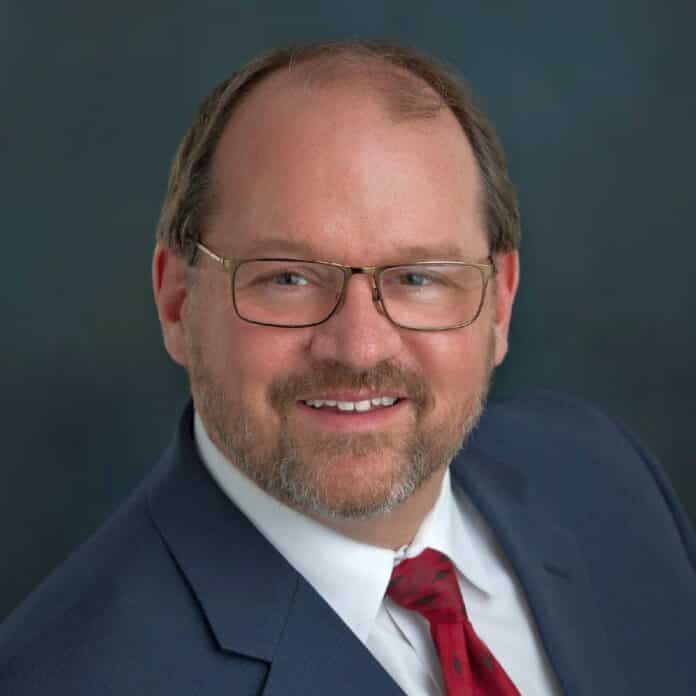“All I want for Christmas is to attend a holiday banquet, shake as many hands as possible, and never see a mask…” Such is the Christmas wish I never dreamed of having before 2020 came around.
At the height of the pandemic in the spring, we averaged eight or nine new COVID-19 infections per day in Hancock County. For the past several weeks, we have averaged 80 to 90 per day, a tenfold increase, with a few days exceeding 150. Over the summer, patients with COVID-19 averaged 5% of the inpatient census at Hancock Regional Hospital. Recently, the average has been 40%. To top it all off, one-third of the COVID-19 deaths in our county since the beginning of the pandemic have occurred in the past five weeks. To say the numbers have increased would be an understatement.
The early days of the pandemic were a time of uncertainty and fear. In the intervening months, those feelings have been replaced with incessant anxiety, despondence and fatigue. As COVID has settled into a constant cloud over the world, many of us have slipped to the extremes in response. COVID-19 is either a “fake disease” and we should just end this nonsense, or it is “the worst calamity” our world has ever faced. As is usually the case, the truth lies in the midst of these extremes. The coronavirus is real and spreads easily. COVID-19 is a deadly disease for some, but not for most. It is not the end of the world, and the way out is clear.
Last week, our Hancock County Commissioners, with input from the health department, emergency management and the hospital, issued a statement defining the problem currently facing us and describing the steps we can all take together as we enter the final phase of the pandemic. The problem? The potential for the hospital to be overrun with COVID patients and the health department to be overwhelmed in contact tracing huge numbers of new cases. The current reality is that the hospital and health department are handling things well, but the staff are very, very tired. Not only do our clinicians suffer from the same COVID fatigue that wears on us all; they also calm the fears of those newly diagnosed with the disease and treat those who become sick enough to need medical assistance. Unfortunately, all too often they hold the hands of these same patients as they die…
But it does not have to be this way. If we all practice the simple steps of avoiding crowded indoor spaces (especially small gatherings at home); properly wearing our masks; and regularly washing our hands, we can avoid catching, or transmitting, the disease in the first place. If we do become infected, it is vital that people we have interacted with learn of their exposure as quickly as possible. Cooperating with contact tracers from the health department therefore is essential, especially since we are most contagious the day before we begin to show symptoms. It would be tragic for a higher-risk family member to get seriously sick or die when the end of our shared nightmare is so close.
Unlike last spring, we now have excellent treatments in the form of monoclonal antibody infusions that can radically reduce the risk of hospitalization, but only if the disease is found quickly and treatment given soon. Indeed, we have treated more than 100 high-risk patients, with exceptional results; in the first 10 days the drug has been available at a new outpatient infusion center we have created at the hospital. While we also have new treatments for those sick enough for inpatient hospital care, it is often too little, too late. Finally, too many of us have put off visiting our doctors, getting our regular screenings, and seeking needed care for things that may have a bigger impact on our health than COVID. The hospital is open and safe. Please use it.
The best news is that the end of the pandemic is clearly in sight. The vaccines developed by Pfizer and Moderna are already being pre-positioned around the world. (Moderna’s vaccine is still awaiting emergency use authorization from the FDA.) Hancock Regional Hospital is a Phase 1A vaccination site and will begin inoculating front-line health care workers this week. It is likely that Phase 2 of the vaccination plan in Indiana will kick off sometime in January, with the most at-risk people eligible to receive it right away, at no cost. While it will take time for the required number of Americans to be vaccinated, it is quite possible that we can achieve that level locally much more quickly.
It is hard to know who to trust these days, but I have faith in the physicians, nurses, pharmacists and health-care teams at Hancock Health. They have reviewed the studies, data and literature on the vaccine. Because of this, I believe the vaccine will be both safe and effective, and my family and I look forward to taking it and helping usher in the beginning of the end of the great pandemic of 2020. Will you join us?
Steve Long is president and CEO of Hancock Regional Hospital.





